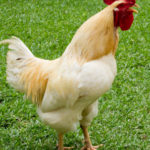The Pros and Cons in Backyard Business Blogging

“The Pros and Cons of Backyard Livestock”, by Jack Savage (the piece appears in the 2019 Old Farmer’s Almanac) illustrates how serious stuff can be presented in a wickedly funny way. And, while not every business blog content writer could pull off the humor, that “Pros and Cons” format is very workable as a template for informational blog posts. Savage offers his advice in five sections: chickens, horses, goats, pigs, and cows. For each, the author gives some background information:
Chickens – the world has 3x as many of them as humans.
Pros: eggs
Cons: keeping them safe from foxes, coyotes, and weasels
.
Horses – you’ll be feeding your horse, but your horse will not be feeding you, and the horse will have final say over who rides whom.
Pros: You can ride a horse
Cons: Writing checks to the hay guy, the vet, the tack shop, the truck-and-trailer dealership.
Goats are highly social, curious, interactive, and smart ruminants (chew their cud).
Pros: Hilarious
Cons: Feet and horns have to be trimmed, you’ll need to keep milking.
Pigs are cute when they’re young, not as filthy as their reputation suggests, and put on weight fast.
Pros: Bacon, ham, sausage, port roast (and did we mention bacon?)
Cons: Destructive, sunburn easily, butchering is serious business
Cows (also ruminants) make you feel like a real farmer and are a lot easier to handle than elephants.
Pros: Unadulterated milk and cheese
Cons: Find a large animal vet, and give him all your money.
In training business blog content writers, I call the technique Savage is using here “templating”. When you have several pieces of information to impart, I explain, consider ways to “unify” them under one umbrella or list category. In fact, at Say It For You, I’m always on the lookout for different “templates”, not in the sense of platform graphics, but in terms of formats for presenting information about any business or professional practice. The format lends variety to the different posts, and also helps readers organize their own thoughts on the subject. Brandon Royal, author of The Little Red Writing Book, calls them “floor plans”. In a chronological structure, the writer discusses the earliest events first, then moves forward in time. In an evaluative structure (which is what Jack Savage used), you discuss the pros and cons of a concept. If a presentation is structured, it will be useful to the reader; otherwise, it will be confusing and of little value.
What if your products and services are nothing to joke about? Jack Savage obviously isn’t enamored of the idea of becoming a backyard livestock farmer – his hilariously amusing remarks are hardly designed to “sell” readers on embracing that kind of new enterprise. But just because your company is serious, doesn’t mean all marketing has to be,” Jason Miller of Social Media Examiner counters. Humor is a hook, grabbing the audience’s attention, as well as an icebreaker, but it’s important to focus the humor around a problem your company can solve.
If Jack Savage were a blog content writer for an animal feed company, could he have fairly presented the drawbacks and challenges, while still encouraging readers to explore animal farming?

Leave a Reply
Want to join the discussion?Feel free to contribute!